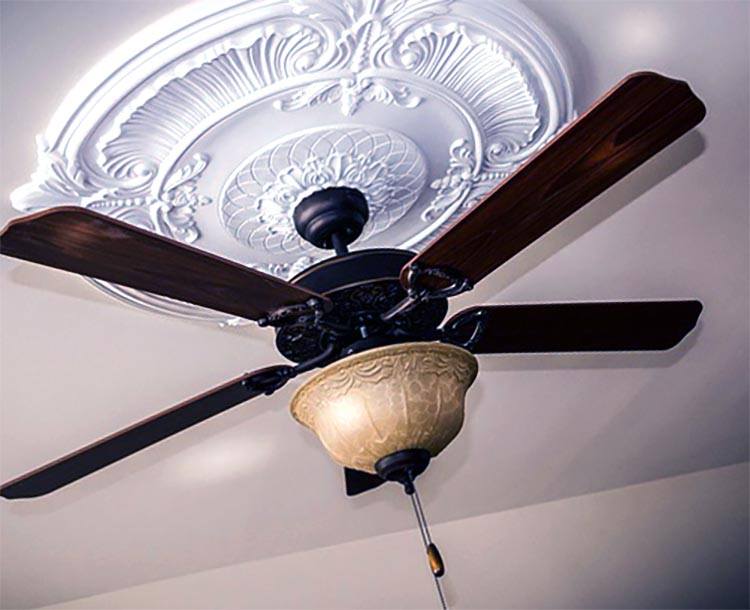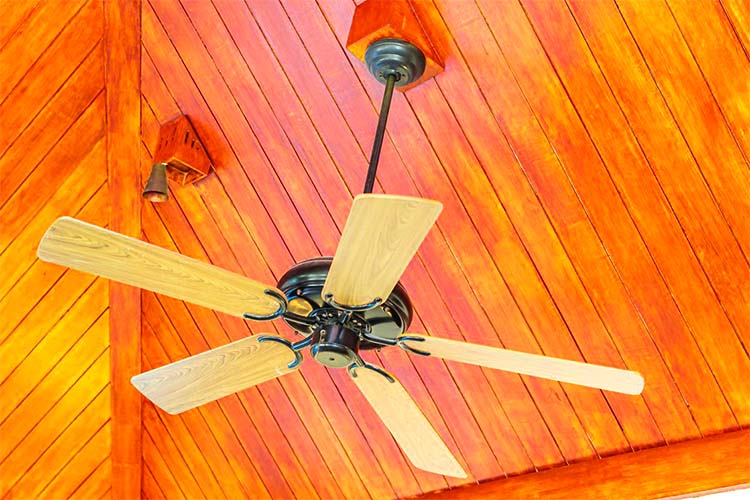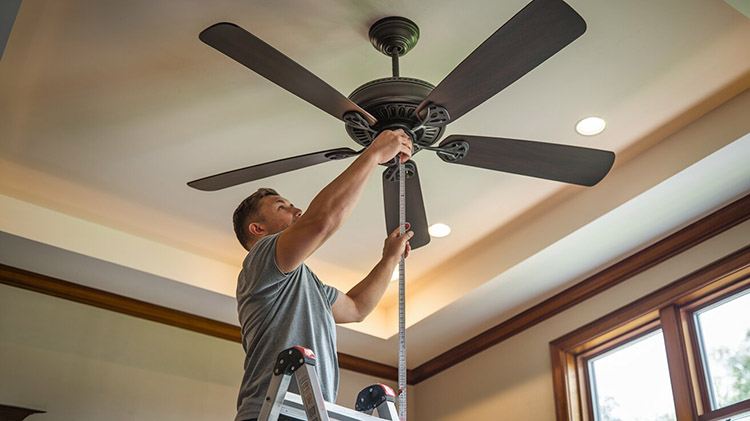Contents
Selecting the appropriate ceiling fan for your home involves more than merely choosing an aesthetically pleasing design – it is crucial to ensure it is the perfect fit for your environment.Understanding how to measure for ceiling fan is essential to achieving this.
A well-installed fan significantly enhances airflow, improves energy efficiency, and contributes positively to the overall aesthetic of the room.
This article examines the importance of accurate measurements, outlines the essential tools required, and provides a comprehensive step-by-step guide to effectively measure your space.
Additionally, it addresses standard fan sizes and offers guidance on how to select the ideal fan for your specific room.
Continue reading to equip yourself with the knowledge necessary to make informed decisions that will maintain both comfort and style in your home.
Why is it Important to Measure for Ceiling Fan Fit?
Measuring for ceiling fan fit is essential as it ensures optimal performance and efficiency within any living space while also enhancing the room’s aesthetic appeal.
Accurate measurements enable homeowners to select an appropriate ceiling fan, taking into account important factors such as room size, ceiling height, and airflow requirements.
When planning how to measure for ceiling fan installation, ensuring the fan is properly fitted can significantly enhance comfort levels, improve energy efficiency, and contribute to effective climate control, making it an essential aspect of home improvement and interior design.
What Tools Do You Need to Measure for Ceiling Fan Fit?

To accurately assess the suitability of a ceiling fan installation, several essential tools are required, including a tape measure, a level, and potentially a ladder for reaching higher ceilings.
These tools facilitate the determination of the ceiling height, room dimensions, and the appropriate downrod length necessary for optimal fan installation. Additionally, comprehending the electrical requirements is crucial to ensure compatibility with the fan’s specifications.
Utilizing a stud finder can be particularly beneficial for locating ceiling joists, which ensures that the mounting brackets are securely installed. Furthermore, having a notepad or digital device for documenting measurements and creating a layout of the space is advisable.
For individuals considering the use of a ceiling fan with smart capabilities, it is prudent to verify the Wi-Fi signal strength in the room to avoid connectivity issues following installation.
Lastly, possessing a screwdriver set will facilitate the assembly of the fan and ensure that all components are correctly fitted, thereby enhancing both aesthetic appeal and safety.
Step-by-Step Guide to Measuring for Ceiling Fan Fit
Measuring for the appropriate fit of a ceiling fan requires a systematic approach to ensure that the fan not only complements the room’s design but also adheres to functionality and safety standards.
This comprehensive guide outlines the necessary measurements, including ceiling height and room size, to determine the optimal fan mounting type and downrod length.
Accurate measurements are essential when learning how to measure for ceiling fan to ensure that its performance and aesthetics align harmoniously with the overall decor of your home.
Step 1 – Measure the Room Size
The initial step in determining the appropriate fit for a ceiling fan involves assessing the size of the room, which is essential for selecting a fan that delivers optimal airflow while adhering to any spatial limitations. It is advisable to measure the length and width of the room in feet to calculate its total square footage.
This measurement enables the selection of a fan with the appropriate diameter to effectively circulate air within the designated area.
This calculation not only aids in identifying the correct fan size but also contributes to maximizing energy efficiency and ensuring comfort.
A fan that is too small may fail to distribute air evenly, whereas one that is excessively large may produce unwanted noise and drafts. It is recommended to allocate one square foot of fan space for every 1.5 to 2 square feet of room area to achieve ideal airflow.
Consequently, understanding the relationship between room size and fan dimensions allows homeowners to create a balanced environment that fosters relaxation while maintaining energy consumption at an acceptable level.
By adhering to these guidelines on how to measure for ceiling fan installation, individuals can enhance their indoor comfort while remaining cognizant of utility costs.
Step 2 – Determine the Ceiling Height
Determining the appropriate ceiling height is crucial for ensuring proper fan installation and compliance with safety standards.
It is imperative to measure the distance from the floor to the ceiling in feet, ensuring that the fan blades have sufficient clearance from the ceiling and any existing fixtures. This clearance significantly impacts the fan’s performance and overall safety.
The appropriate ceiling height is vital not only for aesthetic considerations but also for the operational efficiency of the ceiling fan. Installing a fan too close to the ceiling can lead to inadequate airflow, thereby limiting its effectiveness in circulating air throughout the room.
Maintaining an appropriate distance from walls and other obstacles is essential to prevent potential hazards, such as blade contact. By adhering to established safety standards, individuals can mitigate the risk of accidents and enhance comfort levels within their living spaces.
Such meticulous attention to detail will not only extend the lifespan of the fan but also contribute to a safer environment overall.
Step 3 – Measure the Distance from the Ceiling to the Lowest Point of the Fan Blades

To ensure optimal airflow and user safety, the next step in how to measure for ceiling fan installation is to accurately determine the distance from the ceiling to the lowest point of the fan blades. This measurement is crucial for proper fan positioning.
This measurement assists in determining the appropriate downrod length and ensures that the selected fan type is compatible with the ceiling height and room layout.
Accurate assessment of this distance is essential for both aesthetic and functional purposes, as different fan types may require varying clearances.
A ceiling fan that hangs too low can obstruct movement and create safety hazards, while one positioned too high may fail to circulate air effectively, thereby undermining its intended purpose.
When installing the fan, it is advisable to consider its intended location – more spacious rooms may benefit from longer downrods, whereas lower ceilings might require flush mounts.
Ultimately, this measurement contributes to creating a comfortable environment that enhances airflow while prioritizing user safety and convenience.
Step 4 – Measure the Distance from the Ceiling to the Top of the Fan Motor
Measuring the distance from the ceiling to the top of the fan motor is a critical step in ensuring compatibility with the selected mounting type and downrod length. This measurement is essential to confirm that there is adequate space for the motor to operate efficiently, while also maintaining the desired aesthetic and airflow performance of the fan.
Understanding this distance not only influences the method of fan installation but also impacts air circulation within the room. Proper installation height is vital for optimizing the fan’s efficiency and ensuring smooth operation without any obstructions.
When planning for installation, it is imperative to consider the room’s ceiling height and the specific type of fan selected, as understanding how to measure for ceiling fan placement is crucial. Different models may necessitate varying mounting heights or downrod lengths.
A precisely measured installation enhances the overall ambiance and comfort of the space, highlighting the importance of giving this measurement the careful consideration it warrants.
Step 5 – Measure the Width of the Ceiling Fan Blades
It is essential to measure the width of the ceiling fan blades, as this directly affects the fan’s airflow performance and overall efficacy in distributing air throughout the room. The blade span, typically expressed in inches, will assist in selecting the appropriate fan diameter that corresponds to the room’s size and height, thereby ensuring optimal comfort levels.
A comprehensive understanding of fan blade measurements is crucial for maximizing air circulation – a larger blade span typically moves more air, making it suitable for spacious living areas or rooms with high ceilings.
Conversely, in smaller spaces, a fan with a narrower blade span can deliver adequate airflow without creating discomfort from overly strong breezes.
When selecting the appropriate fan size, it is important to consider the room layout and furnishings. Positioning a fan that complements the dimensions and design of the space will enhance both aesthetics and functionality, ultimately contributing to an inviting and comfortable environment.
What are the Standard Sizes for Ceiling Fans?
Understanding how to measure for ceiling fan sizes is crucial for selecting the appropriate model that best suits the layout and airflow requirements of a room.
Ceiling fans are available in various blade spans, generally ranging from 29 inches for smaller rooms to over 70 inches for larger spaces. This variety ensures that performance is effectively aligned with the dimensions of the room and the height of the ceiling.
How to Choose the Right Size Ceiling Fan for Your Room?

Selecting the appropriate size ceiling fan for a room necessitates careful consideration of several factors, including room dimensions, ceiling height, and airflow requirements.
A ceiling fan that is properly sized not only contributes to enhanced comfort but also promotes energy efficiency by facilitating effective climate control without placing undue strain on the fan’s motor. For instance, a small room of about 75 square feet would typically require a fan that is 29 to 36 inches in diameter, whereas a larger room of about 225 square feet would be better served by a fan that is 42 to 48 inches in diameter.
Additionally, the height of the ceiling should influence the type of fan chosen. For ceilings 8 feet or lower, flush mount fans are recommended as they provide adequate clearance above the floor.
For ceilings higher than 8 feet, understanding how to measure for ceiling fan installation is crucial. Using fans with downrods can bring the blades to a more effective height, enhancing both air circulation and comfort.
It is essential to align the fan’s dimensions with the specific characteristics of the space to ensure optimal performance. A fan that is too large not only consumes more energy but can also create an uncomfortable amount of airflow.
Conversely, a fan that is too small will not adequately circulate air in larger rooms. By properly sizing a ceiling fan, homeowners can enjoy a balance of aesthetics, function, and energy efficiency.
In conclusion, choosing the right ceiling fan involves more than just picking a style or brand – it involves analyzing the specifics of the room’s size, ceiling height, and overall layout to ensure that the fan complements the space effectively.
This consideration ensures that the selected fan will provide the desired comfort and energy efficiency, making it a crucial aspect of home climate control.

